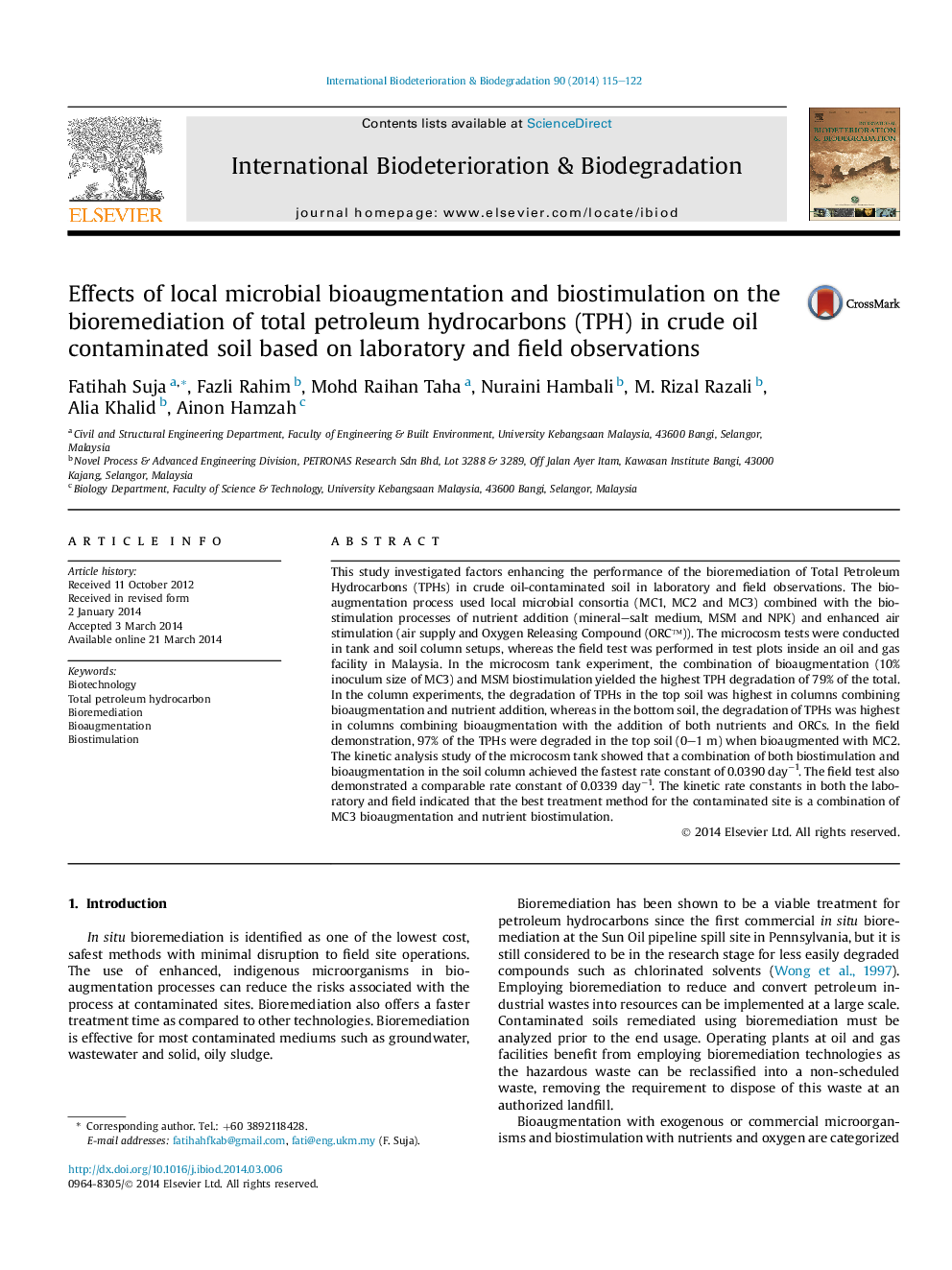| کد مقاله | کد نشریه | سال انتشار | مقاله انگلیسی | نسخه تمام متن |
|---|---|---|---|---|
| 4364794 | 1616326 | 2014 | 8 صفحه PDF | دانلود رایگان |

• Total Petroleum Hydrocarbon (TPH) bioremediation based laboratory and field observations.
• The bioaugmentation process used local microbial consortia (MC1, MC2, MC3).
• Various biostimulation effects are studied for nutrient addition and enhanced air stimulation.
• The kinetic rate constants in both laboratory and field suggested the same types of treatment.
• The best treatment is combination of MC3 bioaugmentation and nutrient biostimulation.
This study investigated factors enhancing the performance of the bioremediation of Total Petroleum Hydrocarbons (TPHs) in crude oil-contaminated soil in laboratory and field observations. The bioaugmentation process used local microbial consortia (MC1, MC2 and MC3) combined with the biostimulation processes of nutrient addition (mineral–salt medium, MSM and NPK) and enhanced air stimulation (air supply and Oxygen Releasing Compound (ORC™)). The microcosm tests were conducted in tank and soil column setups, whereas the field test was performed in test plots inside an oil and gas facility in Malaysia. In the microcosm tank experiment, the combination of bioaugmentation (10% inoculum size of MC3) and MSM biostimulation yielded the highest TPH degradation of 79% of the total. In the column experiments, the degradation of TPHs in the top soil was highest in columns combining bioaugmentation and nutrient addition, whereas in the bottom soil, the degradation of TPHs was highest in columns combining bioaugmentation with the addition of both nutrients and ORCs. In the field demonstration, 97% of the TPHs were degraded in the top soil (0–1 m) when bioaugmented with MC2. The kinetic analysis study of the microcosm tank showed that a combination of both biostimulation and bioaugmentation in the soil column achieved the fastest rate constant of 0.0390 day−1. The field test also demonstrated a comparable rate constant of 0.0339 day−1. The kinetic rate constants in both the laboratory and field indicated that the best treatment method for the contaminated site is a combination of MC3 bioaugmentation and nutrient biostimulation.
Journal: International Biodeterioration & Biodegradation - Volume 90, May 2014, Pages 115–122